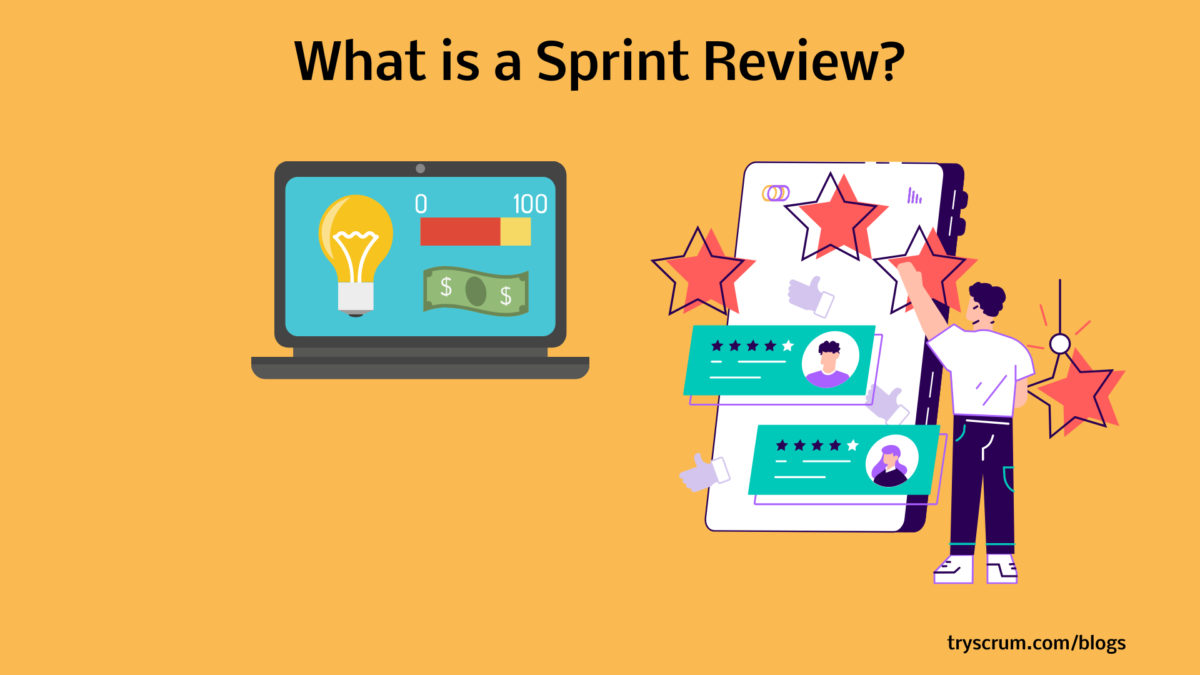The most perceptible activity that can take place in Scrum is the Sprint Review. The feedback-driven working session enables the demonstration of the functionality built during the Sprint to get feedback from the Stakeholders. In the following article, we will discuss the aspects of Sprint Review.
What is a Sprint Review?
The Sprint Review is the most happening event where the developers, the Scrum Master, the Product Owner, and the Stakeholders participate. The Scrum team presents the working increment of the product and collaborates to determine what part of the increment is valuable and what goes back to the product backlog. Sprint Review is the essential exhibition of the accomplished work shown to Customers and Stakeholders. In this process, they offer the work done over the Sprint and compare it with the Product Goal to determine the future adaptations they would have to make to work towards the product’s success.
What is the Main Purpose of a Sprint Review?
As per the Scrum Guide, The purpose of the Sprint Review is to inspect the outcome of the Sprint and determine future adaptations if needed. That means it is a collaborative event to discuss the current state of the product and explore opportunities for adaptations. Sprint is initiated based on the collective commitment agreed by the entire Scrum team. Some people like to call it a ‘demo’ before the big reveal. However, this event is not just a demo. In addition, this event is a working session, and the primary purpose is to maximise opportunities for feedback and minimise risks. The other purposes that the Sprint Review includes
– Maximising responsiveness to customers
– Inspecting the Market place and the potential use of the product
– Talking about the challenges that the Scrum team encountered
What is the need for doing a Sprint Review?
The Sprint Review is extensively considered one of the main events to include Stakeholders to get feedback on the product.
It is an opportunity for the Scrum team to minimise the risk of the product, as a small screening before the big release of a film.
With the Sprint Review in place, the stakeholders would have hands-on experience with the product and give timely feedback. In addition, the Scrum team can assess if changes are to be made or any additional work is needed and factor into the next Sprint planning by updating the product backlog.
How can a Scrum Team learn beyond the Sprint Review?
Sprint Reviews are not the only opportunity to collaborate with stakeholders. Every event in Scrum is an opportunity to inspect and make adjustments needed. However, the Sprint Review is an excellent forum to discuss the product’s capabilities, underlying budget, and customer adoption trends. Great product owners leverage this event to make informed decisions.
For example, new uncertainties may arise, the product roadmap may change, and market trends vary. So, this event can help everyone understand what will be the most valuable thing to build, whether the work needs to start from scratch or need some tweaking. In addition, these things support the Scrum Team in factoring in the additional resources they might need while surging forward.
Concluding Thoughts
In a nutshell, It is best if the Scrum team uses the review as a collaborative working session to reap this event’s benefits and maximise the product’s value as a group over a presentation.



